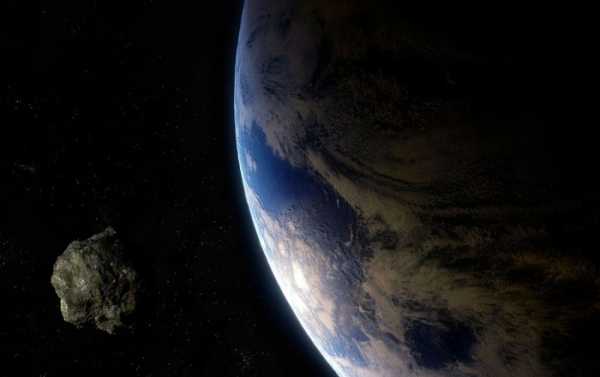
A brief return to ice-age conditions some 13000 years ago on Earth, though well-documented, with its decline of human populations and extinction of some species, has remained a mystery, with an asteroid impact hypothesis proposed as a possible trigger.
An asteroid that likely slammed into Earth nearly 13,000 years ago was possibly witnessed by an ancient civilization inhabiting an area in what is modern-day Syria, according to new research.
The study, published in Scientific Reports and entitled “Evidence of Cosmic Impact at Abu Hureyra, Syria at the Younger Dryas Onset (~12.8 ka): High-temperature melting at >2200 °C”, notes that experts had discovered remnants of glass that were created during a high-impact event, such as an asteroid hitting our planet.
The archeological site, known as Abu Hureyra, in the Euphrates valley in modern Syria, which was determined by scientists to have been abandoned roughly 5,000 years ago, also offered finds such as minerals chromium, iron, nickel and others that formed in temperatures higher than 2,200 degrees Celsius.
The study detailed that the glass may have formed “from the nearly instantaneous melting and vaporization of regional biomass, soils and floodplain deposits, followed by instantaneous cooling.”
The scientist emphasised that the discovered materials are “extremely rare” under normal temperatures, but common during impact events with celestial bodied like asteroids.

Artistic illustration of an asteroid flying by Earth
Due to the broadly scattered material at the site, a “single, major asteroid impact” could not have been the likely reason, believes the expert, suggesting that it was caused by a fragmented comet.
The ‘Last Ice Age’
Younger Dryas that author of the current research alluded to (around 12,800 to 11,550 years BP) is a time when about 14,500 years ago, Earth’s climate began to shift from a cold glacial world to a warmer interglacial state.
However, partway through this transition, temperatures in the Northern Hemisphere suddenly returned to near-glacial conditions.
The period is called the Younger Dryas, after a flower (Dryas octopetala) that grows in cold conditions and became widespread in Europe at the time.

Tiny bits and pieces of Ice Age fossils help scientists to piece together the picture of what the Ice Age really looked like.
The Younger Dryas hypothesis feeds into a theory suggesting an extraterrestrial body crashing to Earth almost 13,000 years ago caused the extinction of many large animals and a significant population decline in early humans.
In October 2019, a study was published that claimed a brief ice age period occurred roughly 12,800 years ago and was caused by an asteroid impact.
Led by University of South Carolina archaeologist Christopher Moore, the team of scientists presented evidence of a cosmic impact based on research done at White Pond near Elgin, South Carolina. The study made use of similar findings of platinum spikes — an element associated with cosmic objects like asteroids or comets — in North America, Europe, western Asia and recently in Chile and South Africa
Sourse: sputniknews.com
0.00 (0%) 0 votes


































